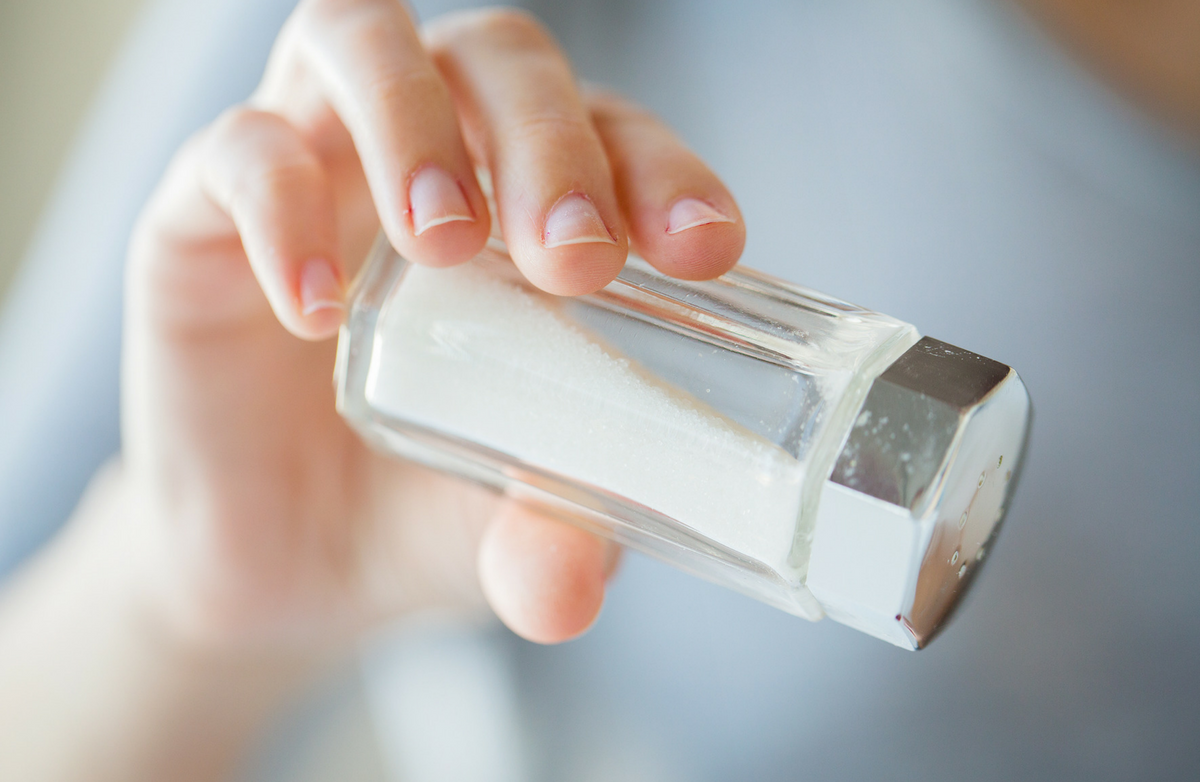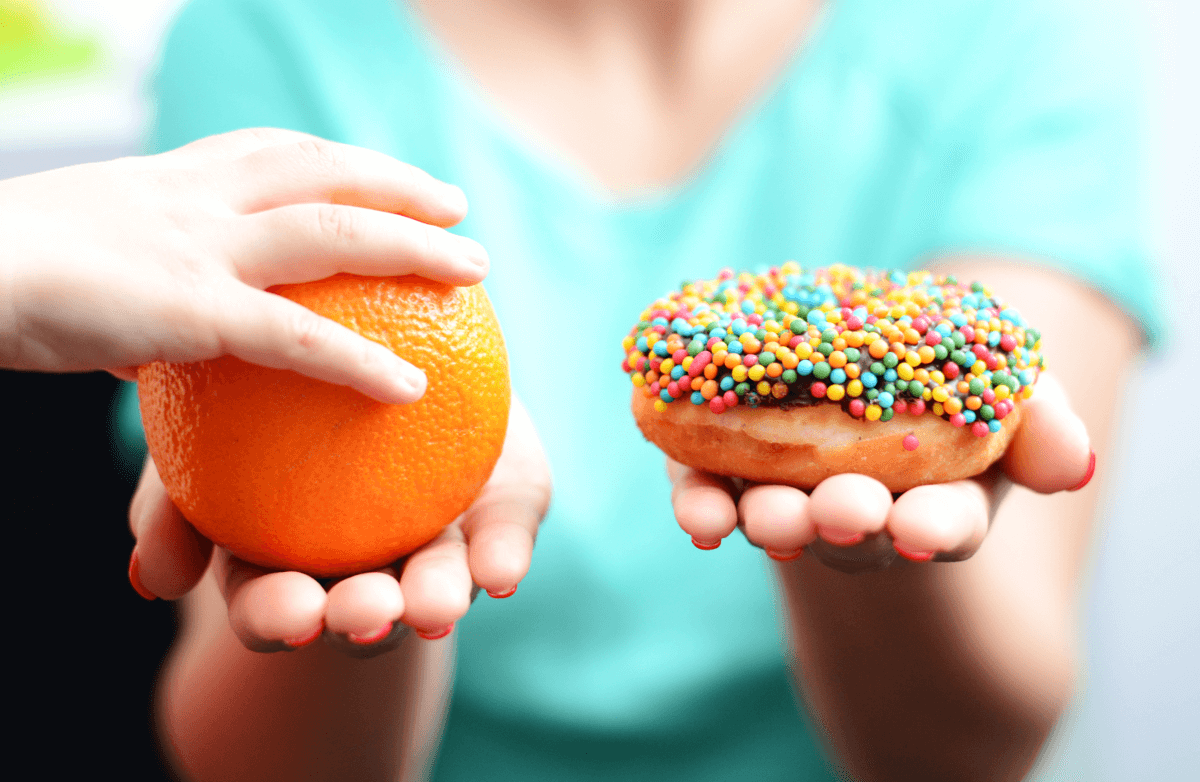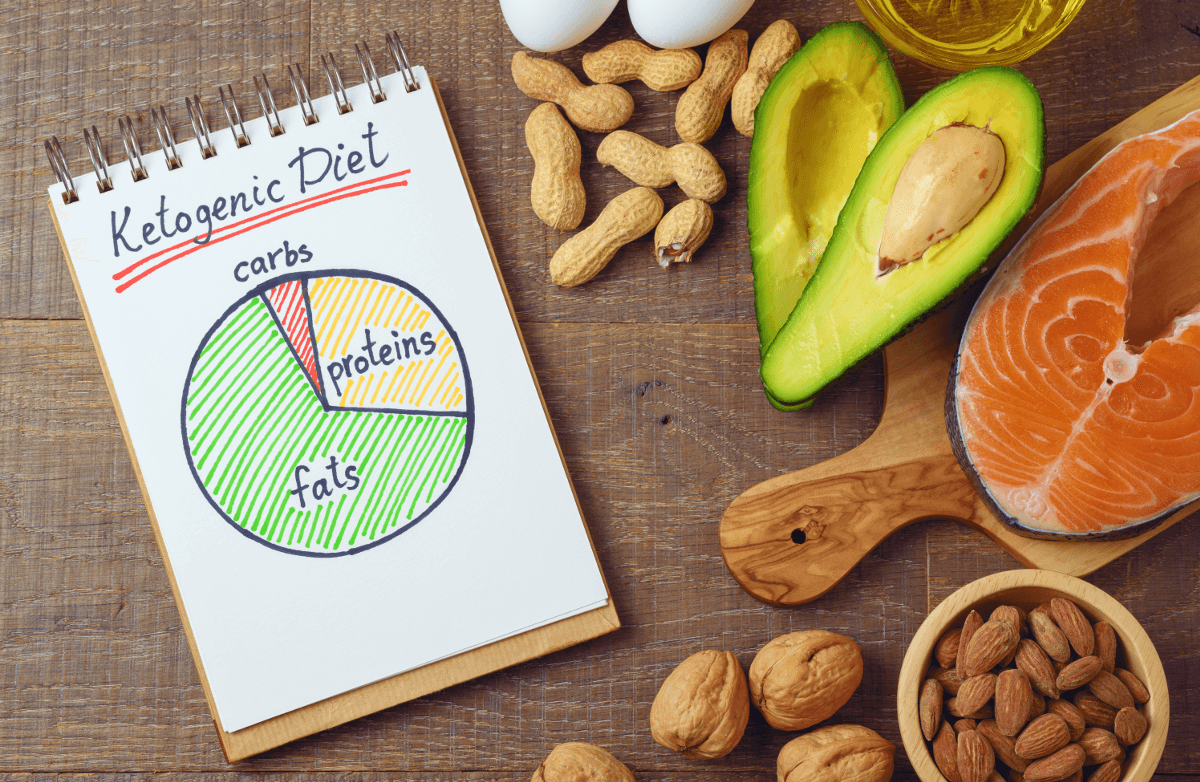
When embarking on a health and weight loss journey, "sugar" and "fat" immediately become four-letter words. Meanwhile, another foodstuff tends to slide under the radar, even though it can be just as damaging (if not more so) to the health of the person consuming it. And it just so happens to actually be a four-letter word.
Salt.
Made up of 40 percent sodium and 60 percent chloride, this ubiquitous food flavoring is present in almost all common foods. Some have an obviously salty taste, like pretzels and potato chips, while others—like meat, seafood, eggs and dairy products—are naturally high in sodium, but might not taste overly salty.
For adults, ages 19-50 years old, the Adequate Intake (AI) level for sodium is set at 1500 mg per day. While this amount is somewhat higher than the body actually needs, it helps to ensure that one’s total food intake also meets other important nutrients and covers sweat losses for individuals exposed to high temperatures or intense physical demands of labor and exercise. According to Becky Hand, registered dietitian nutritionist, too much sodium can cause high blood pressure, which in turn increases the risk of scary events like stroke, heart disease and kidney problems. It can also worsen premenstrual syndrome (PMS) and prolong menstrual cramping in some women.
Too much sodium to function (about 1,500 milligrams), too much can cause high blood pressure, which in turn increases the risk of scary events like stroke, heart disease and kidney problems. Hand adds that eating a large amount of salty food can also worsen premenstrual syndrome (PMS) and prolong menstrual cramping in some women.
Realistic Tips for Reducing Salt/Sodium Intake
Experts recommend that adults limit their sodium intake to 2,300 milligrams per day, which is roughly equivalent to one tablespoon of salt. So how do you know if you're consuming too much? Hand says tracking your food is the best strategy. Once you track for several weeks, you can quickly identify the major food items that are adding the most sodium to your diet. Registered dietitian nutritionist Ilana Muhlstein says you can also watch for noticeable swelling and bloating as a sign of elevated sodium levels.
Don't worry—we're not suggesting that you swear off every grain of salt for life. But there are some smart steps you can and should take to curb your cravings and wean your body off a heavy reliance on it.
Deconstruct the craving. Liza Baker, health coach with Simply: Health Coaching, believes that salty, crunchy or chewy foods are indicative of a "mind craving"—your mind is not being stimulated enough, and you're reaching for salty foods because it feels good to bite something when feeling frustrated. The opposite is a "heart craving" for sweet, creamy foods, she says, which most often happens when we're emotionally upset. "Try to catch yourself when reaching for salty snacks and make note of what happened immediately before your craving," suggests Baker. "Were you bored and watching mindless TV? Were you taking care of busy work that didn't engage your brain to its full capacity? Once you find a correlation, you might be able to stop reaching for the salt and do something more mentally engaging."
Make more food at home. "Most of our salt intake comes from restaurant and packaged foods, not necessarily from adding salt when cooking," Muhlstein notes. "Don't be afraid to sprinkle a bit of sea salt on sliced cucumbers as a delicious snack. It will still likely be much lower in sodium than a packaged snack, like a bag of chips."
Find flavor elsewhere. Chelsey Amer, MS, RDN, CDN, creator of CitNutritionally.com, adds flavor to meals through dried spices and fresh herbs. Some of her favorites include turmeric, garlic, cumin, chili powder, basil, parsley and oregano, all of which have great health benefits. Muhlstein also notes that spicy ingredients, like chili powder and red pepper flakes, can enhance the taste and experience of food so it doesn't require as much salt.
Read the spice labels. Muhlstein suggests looking for seasoning blends where salt isn't listed in the first three to five ingredients. "Ingredients need to be listed on the label by weight, from most prominent in the product to the least," she explains. "If you find a seasoning blend with other spices and herbs listed earlier than salt, then it's a better one to use."
Cook from scratch using whole foods. "The risks of consuming too much salt are exacerbated by eating the standard American diet, which is high in processed foods and added sodium," says Baker. "Once someone learns to cook from scratch using whole foods, the risk of eating too much salt is greatly reduced, and adding salt while cooking or at the table is not so likely to put them over the recommended level."
Limit restaurant visits. Restaurants notoriously use an excessive amount of salt, Amer notes, so dining out less can drastically help with elevated sodium levels. And if you do order takeout, she suggests adding a frozen mixed bag of veggies to your order to thin out any (sodium-filled) sauce and add a boost of nutrition, plus, you're more likely to eat less and have leftovers.
Use sea salt in place of iodized table salt. There is some debate about the theory that sea salt provides some necessary minerals in which we are often deficient, but Baker has seen her clients overcome their salt cravings by substituting sea salt for iodized table salt. Some experts believe that because sea salt comes from evaporated ocean or lake water and is not heavily processed, it contains more minerals and elements than table salt. "When the foods, such as salty chips, don't give us the minerals we need, we keep eating them in an attempt to fulfill the need. The thinking is that once the nutritional deficiency is addressed, the craving disappears," explains Baker.
Drain and rinse. To remove up to 40 percent of the sodium in canned vegetables, Hand says it's best to pour the contents into a colander to drain off the liquid, then rinse with tap water for one minute.
Look for cold cut substitutions. Deli meats and cheeses are sneaky sodium culprits. At your grocery store or meat counter, Hand suggests talking to the store rep about lower-sodium options for sandwiches and salads.
Become a sodium sleuth. Hand suggests looking for lower-sodium options to replace your favorite mixes and boxed convenience items. She shares a couple of her favorite copycat examples, below.
Copycat Taco Seasoning Mix
2 tablespoons ground cumin
2 teaspoons chili powder
½ teaspoon garlic powder (not garlic salt)
½ teaspoon dry onion flakes
Dash of black pepper to taste
Dash of cayenne pepper to taste
Copycat Boxed Seasoned Rice
(Combine all ingredients in a medium saucepan, stir to combine and bring the mixture to a boil. Cover the saucepan with a lid, lower heat to simmer and cook for 15 minutes until liquid is absorbed. Cover the saucepan with a lid, lower heat to simmer and cook for 15 minutes until liquid is absorbed.)
1 teaspoon dry onion flakes
½ teaspoon dry parsley
¼ teaspoon garlic powder
1 teaspoon turmeric
½ teaspoon cumin
¼ teaspoon ginger powder
½ teaspoon ground black pepper
2 cups low sodium chicken broth
2 cups water
2 cups long grain rice
1/3 cup wild rice













